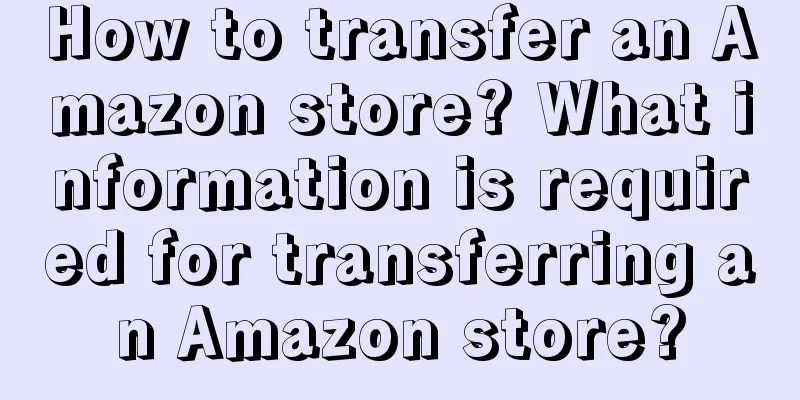How to transfer an Amazon store? What information is required for transferring an Amazon store?

|
In some cases, sellers may need to transfer their Amazon stores for various reasons. This article will explore the issue of how to transfer Amazon stores from multiple perspectives to help sellers better understand the process. 1. Amazon store transfer situation: Sellers may consider transferring their Amazon stores for personal reasons, business strategy adjustments, or other reasons. In this case, the correct transfer process can ensure the rights and interests of sellers and buyers. 2. Steps for transferring Amazon stores: Find a suitable buyer: The seller first needs to find a suitable buyer, which can be found through online platforms or relationship networks. Determine the transfer conditions: The seller and buyer need to negotiate and determine the transfer conditions, including the price of the store, delivery method, post-transfer services, etc. Back up important data: Before transferring a store, the seller should back up all important store-related data to ensure that no important information is lost due to the transfer. Notify Amazon: Sellers need to submit a transfer application to Amazon, which should include relevant information of the seller and buyer as well as specific details of the transfer. Amazon review: Once the transfer application is submitted, Amazon will review it to ensure that the application complies with regulations and is legal. Buyer information verification: Buyers need to provide relevant information for verification to ensure that their identity is legal and they have the ability to continue operating the store. Complete the transfer: Once the review is passed and the buyer's information is successfully verified, the seller can transfer the management rights of the store to the buyer to complete the transfer process. 3. Information required for Amazon store transfer: Store information: Sellers need to provide basic store information, including store name, registered country, store link, etc. Transaction details: The seller and buyer need to provide the transaction details of the transfer, including the transfer price, payment method, delivery method, etc. Seller information: The seller needs to provide his or her contact information, name, identity proof and other information. Buyer information: Buyers need to provide their contact information, name, identity proof, business plan and other information. |
>>: Is it easy to do cross-border e-commerce without a source of goods? How to do it?
Recommend
Why don't these Japanese companies do marketing? They sell their products all over the world
During his visit to Japan, the author solved a puz...
Why does “consumer society” require “endless desire”?
I believe everyone has always had a question, why ...
This year's Double 11, it's time for e-commerce to return to common sense
This article introduces the misunderstandings of e...
How many brands have been killed by the “suspension of updates on Weibo, WeChat and Douyin”?
Previously, "suspending Weibo, WeChat and Dou...
How long does it take for something to arrive on Amazon Japan? How long does it usually take to ship?
When buying things online, what people are most co...
How to pause Amazon advertising portfolio? When to pause?
Everyone should know that you can place ads on Ama...
What are adult products on Amazon? What are the situations where they are labeled as adult products?
When opening a store on Amazon, people usually cho...
Industry research methodology that can be mastered in 1 hour
For students working in industry operations or oth...
Paris Olympic Games brand marketing "learning materials" released
When the Olympic flame lit up in the night sky of ...
What courier does Amazon use for direct mail? How to operate Amazon?
Amazon is the largest cross-border e-commerce plat...
When content communities ask users for money
The commercialization of content communities has a...
What is the average return rate on Amazon? How can I check the return rate?
There are now many merchants opening stores on the...
I can't eat McDonald's in the county
As competition in the fast food industry becomes i...
Brand No. 1: (category + mindset + origin) x coverage
This article explains how to build a brand in four...
Lao Xiang Ji publishes its dish traceability report. Isn’t it afraid that its peers will copy it?
This article delves into the strategic intentions ...









